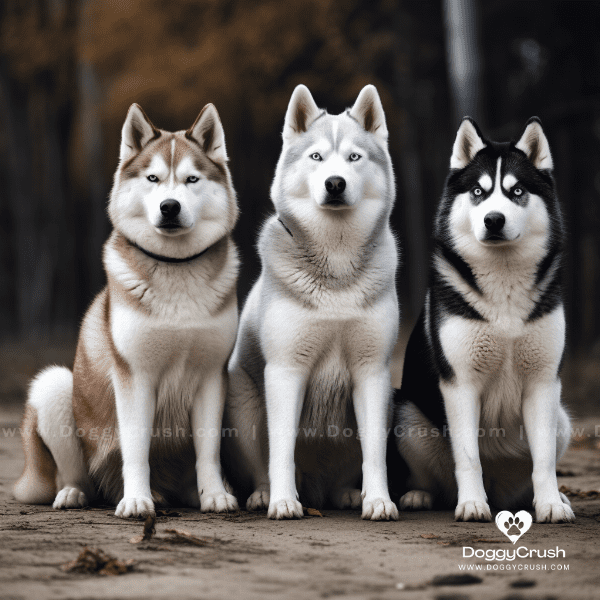Table of Contents
- History and Origin of the Alaskan Malamute
- Physical Characteristics and Appearance
- Temperament and Personality Traits
- Training and Exercise Requirements
- Grooming and Care Tips for Alaskan Malamutes
- Health Concerns and Common Issues
- Nutrition and Feeding Requirements
- Choosing the Right Alaskan Malamute Puppy
- Socialization and Interaction with Other Pets
History and Origin of the Alaskan Malamute
The Alaskan Malamute is one of the oldest Arctic sled dogs, and its origins can be traced back to thousands of years ago. These dogs are named after the Mahlemiut tribe, who were native to Alaska’s Norton Sound area. Mahlemiut dogs were bred for their endurance, strength, and ability to withstand the harsh Arctic climate.
Ancestors of the Alaskan Malamute
The Alaskan Malamute is a descendant of the domesticated dog and the Arctic wolf. DNA studies have shown that the Alaskan Malamute is one of the few breeds with no wolf or fox mixed in its bloodlines. Instead, they are related to other Arctic breeds, such as the Samoyed and the Siberian Husky.
Early Uses of Alaskan Malamutes
The Mahlemiut tribe used Alaskan Malamutes for various purposes, including hunting, transportation, and protection. These dogs were vital to the survival of the tribe in the harsh Arctic climate, as they could haul heavy loads for long distances and were also excellent hunters.
Introduction to the United States
The first Alaskan Malamutes arrived in the United States in the early 1900s, during the Alaskan gold rush. People started to appreciate the breed’s endurance and strength, and they were used for transportation and exploration. The breed’s popularity continued to grow, and in 1935, the American Kennel Club recognized the Alaskan Malamute as a distinct breed.
Modern-Day Alaskan Malamutes
Today, Alaskan Malamutes are still used for transportation, exploration, and hunting, but they are primarily kept as companion animals. They are known for their loyalty, intelligence, and playful nature. The breed is also a popular choice for sled racing and weight-pulling competitions, as their strength and endurance make them excellent competitors.
Overall, the Alaskan Malamute’s history is a testament to their strength, endurance, and versatility. From their early days as the Mahlemiut tribe’s trusted companions to their modern-day role as beloved pets, these dogs have a rich and fascinating history.
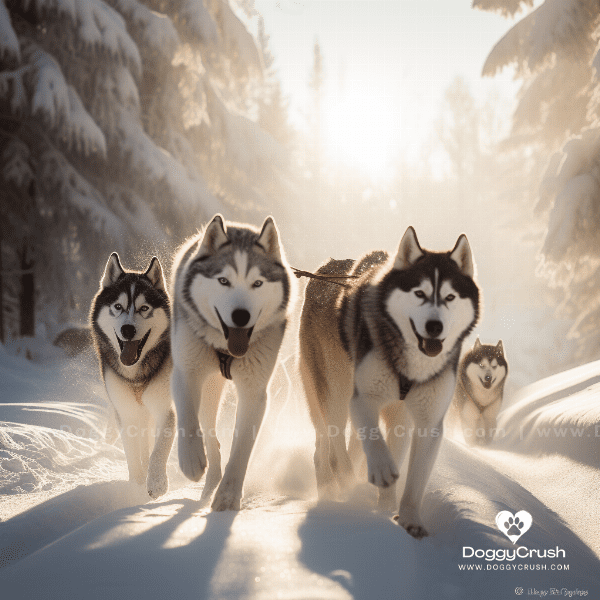
Physical Characteristics and Appearance
The Alaskan Malamute is a large, powerful dog breed that was originally bred for transportation and hauling heavy loads in the Arctic regions. Here are some of the physical characteristics and appearance of the breed:
Size and Weight
Alaskan Malamutes are a large breed of dog, with males typically weighing between 75 and 100 pounds and females weighing between 60 and 85 pounds. They typically stand 23 to 25 inches tall at the shoulder.
Coat and Colors
The Alaskan Malamute has a thick, double coat that is designed to keep them warm in cold temperatures. Their undercoat is soft and dense, while their outer coat is longer and coarser. The breed comes in a variety of colors, including black, gray, sable, and red.
Head and Body
The Alaskan Malamute has a broad head and strong, muscular body. Their ears are triangular in shape and stand erect, and their eyes are medium-sized and almond-shaped. They have a broad chest and a deep, powerful gait that allows them to pull heavy loads over long distances.
Tail
One of the most distinctive features of the Alaskan Malamute is their tail. The breed has a thick, bushy tail that curls over their back, which helps to keep them warm in cold temperatures.
Overall Appearance
The Alaskan Malamute is a majestic-looking breed that commands attention with their powerful and confident presence. Their thick, double coat and muscular body give them a rugged appearance, while their expressive eyes and friendly demeanor make them an excellent companion animal.
In conclusion, the Alaskan Malamute’s physical characteristics and appearance are a reflection of their history and purpose as a working breed in the Arctic regions. Their size, strength, and thick coat are all designed to help them thrive in cold temperatures and haul heavy loads over long distances, while their friendly and loyal personality make them a beloved companion animal.

Temperament and Personality Traits
The Alaskan Malamute is a friendly and loyal breed that makes an excellent companion animal. Here are some of the temperament and personality traits of the breed:
Friendly and Sociable
Alaskan Malamutes are known for their friendly and sociable nature. They enjoy being around people and other dogs, and they make great family pets. They are especially good with children, as they are patient and gentle.
Loyal and Protective
The Alaskan Malamute is a loyal breed that forms strong bonds with their owners. They are protective of their family and will defend them if they feel threatened. This protective instinct makes them excellent watchdogs.
Independent and Stubborn
While Alaskan Malamutes are friendly and loyal, they can also be independent and stubborn. They have a strong will and may not always obey commands, especially if they are not properly trained. It is important to establish a firm and consistent training regimen with this breed.
Playful and Energetic
Alaskan Malamutes are a playful and energetic breed that requires regular exercise and mental stimulation. They love to play, whether it’s with their owners or other dogs. They also enjoy activities like hiking and jogging.
Vocal and Expressive
Alaskan Malamutes are a vocal breed that likes to communicate with their owners through howling, barking, and other vocalizations. They are also expressive and have a wide range of facial expressions that can help their owners understand their moods.
In summary, the Alaskan Malamute’s temperament and personality traits make them an excellent companion animal for those who are willing to put in the time and effort to properly train and care for them. They are friendly, loyal, and protective, but also independent and playful. With the right training and socialization, they can be a wonderful addition to any family.
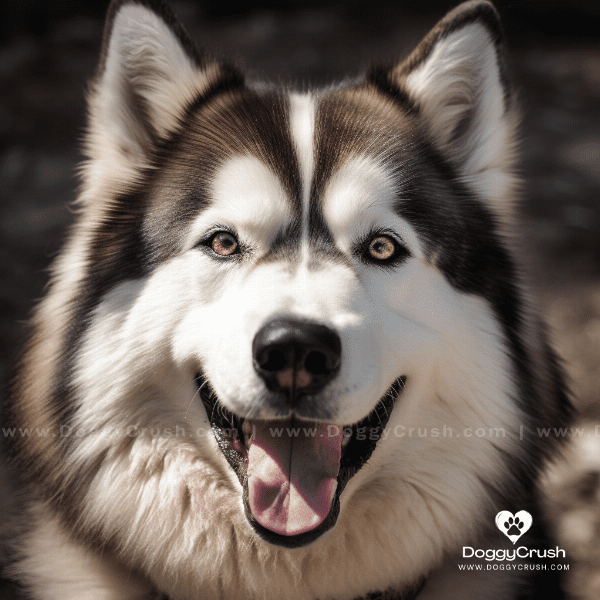
Training and Exercise Requirements
Training and exercise are crucial for the health and happiness of an Alaskan Malamute. Here are some tips for training and exercising your Malamute:
Start Training Early
It is essential to start training your Alaskan Malamute as early as possible. Puppies are easier to train, and starting early will help them develop good habits and behavior patterns. Socialization is also crucial during the puppy stage to ensure they are comfortable around other people and animals.
Consistency is Key
Alaskan Malamutes are an intelligent breed, but they can also be stubborn. Consistency is essential in training to establish good behavior and obedience. Training should be firm, yet positive, and rewards-based.
Exercise Regularly
Alaskan Malamutes are a high-energy breed that requires regular exercise. They enjoy activities such as hiking, jogging, and playing fetch. They are also excellent sled dogs, and many Malamutes compete in sled races. Lack of exercise can lead to boredom, anxiety, and destructive behavior.
Grooming and Care
Malamutes have a thick, double coat that requires regular grooming to prevent matting and tangling. They shed heavily twice a year, which requires extra attention to prevent excessive shedding in the home. Malamutes also need regular dental care, nail trimming, and ear cleaning.
Avoid Negative Reinforcement
Alaskan Malamutes are sensitive to negative reinforcement and punishment-based training methods. Harsh training can lead to fear and anxiety, which can cause behavioral problems. Positive reinforcement techniques, such as treats, praise, and playtime, are more effective for this breed.
In summary, training and exercise are crucial for the health and happiness of an Alaskan Malamute. Starting training early, being consistent, and using positive reinforcement are essential for establishing good behavior. Regular exercise, grooming, and care will help your Malamute thrive and be a happy and healthy companion.
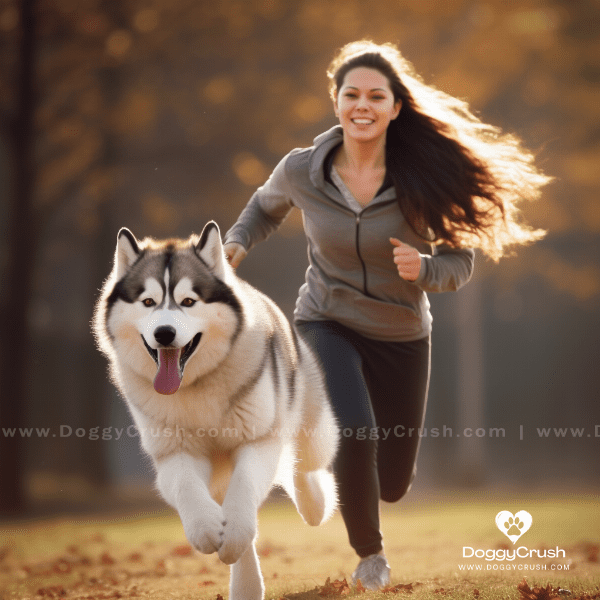
Grooming and Care Tips for Alaskan Malamutes
Alaskan Malamutes have a thick, double coat that requires regular grooming and care. Here are some tips for keeping your Malamute’s coat and overall health in top shape:
Brushing
Regular brushing is essential for maintaining your Malamute’s coat. Brushing should be done at least once a week, and more frequently during shedding season. Use a slicker brush or undercoat rake to remove loose hair and prevent matting.
Bathing
Malamutes do not require frequent bathing, but they do need periodic baths to maintain skin and coat health. Bathing should be done every three months or as needed, using a mild dog shampoo. Be sure to rinse thoroughly to avoid skin irritation.
Nail Trimming
Regular nail trimming is necessary to prevent overgrowth and splitting. Malamutes have thick nails that can be difficult to trim, so it is recommended to have them trimmed by a professional groomer or veterinarian.
Dental Care
Dental care is important to prevent tartar buildup, bad breath, and gum disease. Brush your Malamute’s teeth regularly using a dog-friendly toothpaste, and provide dental chews and toys to promote healthy teeth and gums.
Ear Cleaning
Malamutes are prone to ear infections, so it is important to clean their ears regularly. Use a cotton ball or cloth dampened with a veterinarian-recommended ear cleaning solution to gently clean the inside of the ear. Avoid using cotton swabs or inserting anything into the ear canal.
Nutrition
A healthy diet is essential for the overall health and wellbeing of your Malamute. Choose a high-quality dog food that meets their nutritional needs and avoid overfeeding to prevent obesity.
By following these grooming and care tips, you can help your Alaskan Malamute maintain a healthy coat and overall health. Regular brushing, nail trimming, dental care, and ear cleaning will keep them looking and feeling their best. A nutritious diet will also promote good health and longevity.

Health Concerns and Common Issues
While Alaskan Malamutes are generally healthy dogs, they are prone to certain health concerns and common issues. Here are some of the most common health concerns to watch for:
Hip Dysplasia
Hip dysplasia is a common condition in large breeds, including Alaskan Malamutes. It occurs when the hip joint doesn’t fit properly, leading to wear and tear and eventual arthritis. Signs of hip dysplasia include limping, stiffness, and difficulty standing or walking.
Bloat
Bloat, also known as gastric torsion, is a life-threatening condition that occurs when the stomach fills with gas and twists. It is most common in large, deep-chested breeds like the Alaskan Malamute. Signs of bloat include restlessness, excessive drooling, vomiting, and a distended abdomen.
Eye Problems
Alaskan Malamutes are prone to certain eye problems, including cataracts and progressive retinal atrophy (PRA). Cataracts can lead to vision loss, while PRA can lead to total blindness.
Hypothyroidism
Hypothyroidism is a condition in which the thyroid gland doesn’t produce enough thyroid hormone. Signs of hypothyroidism include weight gain, lethargy, and a dull coat.
Skin Allergies
Alaskan Malamutes are prone to skin allergies, which can be caused by a variety of factors, including food, environmental allergens, and flea bites. Signs of skin allergies include itching, redness, and hair loss.
Cancer
Alaskan Malamutes are also prone to certain types of cancer, including lymphoma and hemangiosarcoma. Regular check-ups with a veterinarian can help detect cancer early and improve treatment options.
In conclusion, while Alaskan Malamutes are generally healthy dogs, they are prone to certain health concerns and common issues. Regular veterinary check-ups, a nutritious diet, and proper exercise and grooming can help prevent and manage these issues. It is essential to be aware of the signs of these conditions and seek prompt veterinary care if you suspect your Malamute is experiencing any health problems.
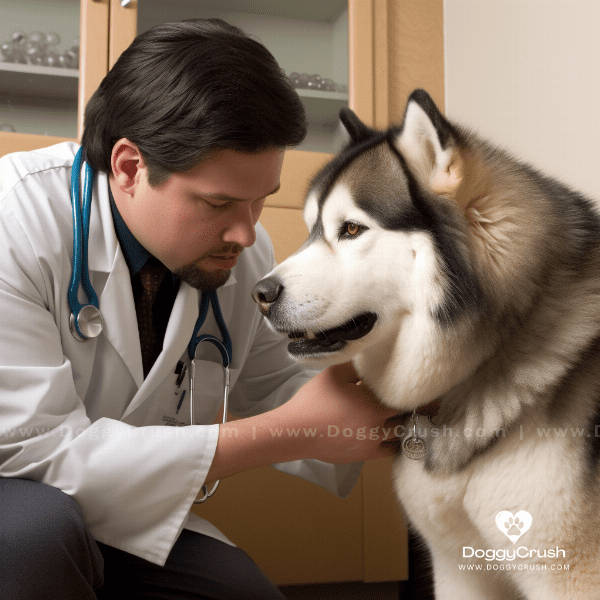
Nutrition and Feeding Requirements
Alaskan Malamutes have specific nutritional needs to support their active lifestyle and maintain their overall health. Here are some tips for feeding your Malamute:
Protein
Protein is essential for building and maintaining muscle mass, and Alaskan Malamutes require a high-protein diet. Look for dog food that contains a minimum of 18% protein, and opt for protein sources like chicken, beef, and fish.
Fat
Fat is a concentrated source of energy, and Alaskan Malamutes require a diet that is high in fat to support their active lifestyle. Look for dog food that contains at least 5% fat, and opt for healthy fat sources like salmon oil or flaxseed oil.
Carbohydrates
While carbohydrates are not essential for dogs, they can provide a source of energy and fiber. Look for dog food that contains high-quality carbohydrates like sweet potatoes, peas, or brown rice.
Feeding Schedule
Alaskan Malamutes should be fed twice a day, rather than one large meal. This helps to prevent bloat and other digestive issues. Puppies may need to be fed more frequently to support their growth and development.
Portion Control
Alaskan Malamutes are prone to obesity, so portion control is essential. Follow the feeding guidelines on the dog food package, and adjust as needed based on your Malamute’s activity level and weight.
Hydration
Make sure your Malamute has access to fresh, clean water at all times. Proper hydration is essential for their overall health and wellbeing.
In summary, Alaskan Malamutes have specific nutritional needs to support their active lifestyle and maintain their overall health. A high-protein, high-fat diet with healthy carbohydrates, fed twice a day with portion control, is essential for their wellbeing. Regular veterinary check-ups can also help ensure that your Malamute is getting the proper nutrition they need.
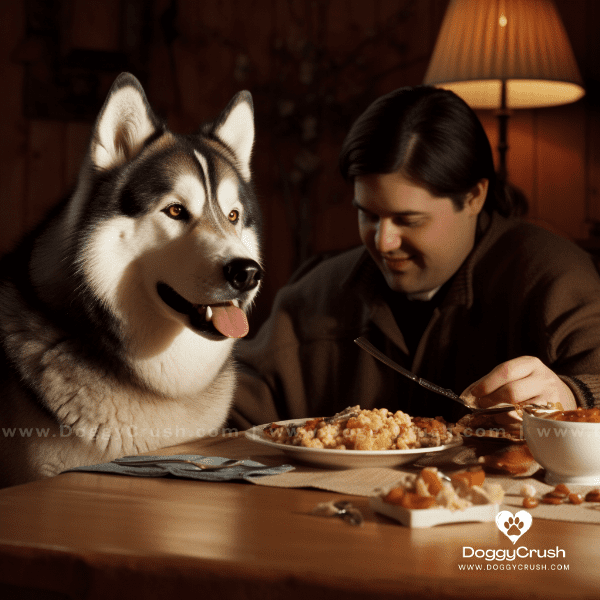
Choosing the Right Alaskan Malamute Puppy
Choosing the right Alaskan Malamute puppy is an important decision that requires careful consideration. Here are some tips to help you choose the perfect Malamute puppy for you:
Research
Before choosing an Alaskan Malamute puppy, it is important to do your research. Learn about the breed’s temperament, exercise requirements, and grooming needs. Research reputable breeders and rescue organizations in your area.
Meet the Parents
Meeting the parents of the litter can give you insight into the temperament and behavior of the puppies. Observe how the parents interact with people and other dogs, and ask the breeder about any health concerns or genetic issues.
Health Checks
Make sure the puppy has received their first set of vaccinations and has been dewormed. Ask the breeder for health certificates and information on the puppy’s parents and their health history.
Temperament
Observe the puppy’s behavior and temperament. Look for a puppy that is friendly, outgoing, and curious. Avoid puppies that seem fearful or aggressive.
Activity Level
Consider the puppy’s activity level and exercise requirements. Alaskan Malamutes are a high-energy breed that requires regular exercise and mental stimulation. Look for a puppy that is active and playful.
Grooming Needs
Consider the puppy’s grooming needs. Alaskan Malamutes have a thick, double coat that requires regular brushing and grooming. Make sure you are prepared to provide the necessary grooming to keep their coat healthy and clean.
In conclusion, choosing the right Alaskan Malamute puppy requires careful consideration and research. Meeting the parents, observing the puppy’s temperament and behavior, and considering their activity level and grooming needs are all important factors to consider. With proper research and preparation, you can find the perfect Alaskan Malamute puppy to become your new companion.
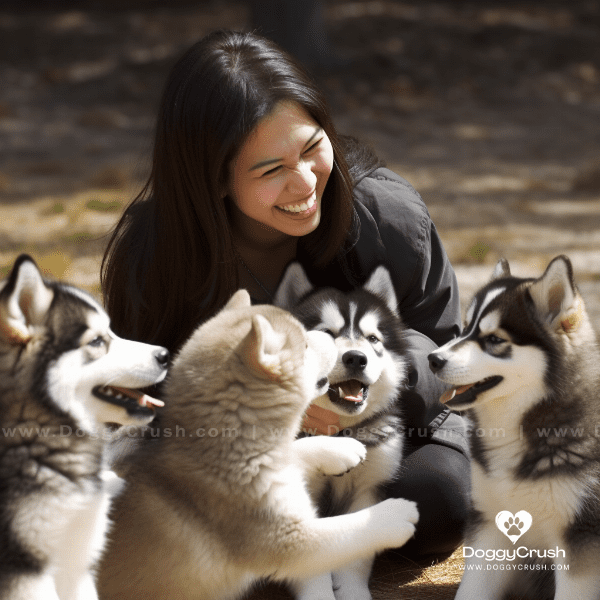
Socialization and Interaction with Other Pets
Socialization is an important part of raising a well-behaved and social Alaskan Malamute. Here are some tips for socializing your Malamute and helping them interact with other pets:
Early Socialization
Socialization should begin as early as possible, ideally during the puppy stage. Introduce your Malamute to a variety of people, animals, and environments to help them become comfortable and well-adjusted.
Positive Reinforcement
Use positive reinforcement to encourage good behavior and socialization. Reward your Malamute with treats and praise when they interact positively with other pets and people.
Supervision
Always supervise your Malamute when interacting with other pets, especially during the early stages of socialization. This helps to prevent any negative interactions and ensures the safety of all animals involved.
Introductions
Introduce your Malamute to other pets gradually and in a controlled manner. Start with short, supervised interactions and gradually increase the duration and frequency as your Malamute becomes more comfortable.
Training
Proper training is essential for helping your Malamute interact positively with other pets. Use obedience training to establish good behavior and encourage socialization.
Breed-Specific Considerations
Alaskan Malamutes have a strong prey drive and may not be suitable for households with small pets like cats or rabbits. It is important to consider your Malamute’s individual temperament and behavior when introducing them to other pets.
In summary, socialization is an important part of raising a well-behaved and social Alaskan Malamute. Early socialization, positive reinforcement, supervision, and proper training can help your Malamute interact positively with other pets. It is also important to consider breed-specific considerations when introducing your Malamute to other pets. With proper socialization and training, your Alaskan Malamute can become a well-adjusted and social companion animal.


